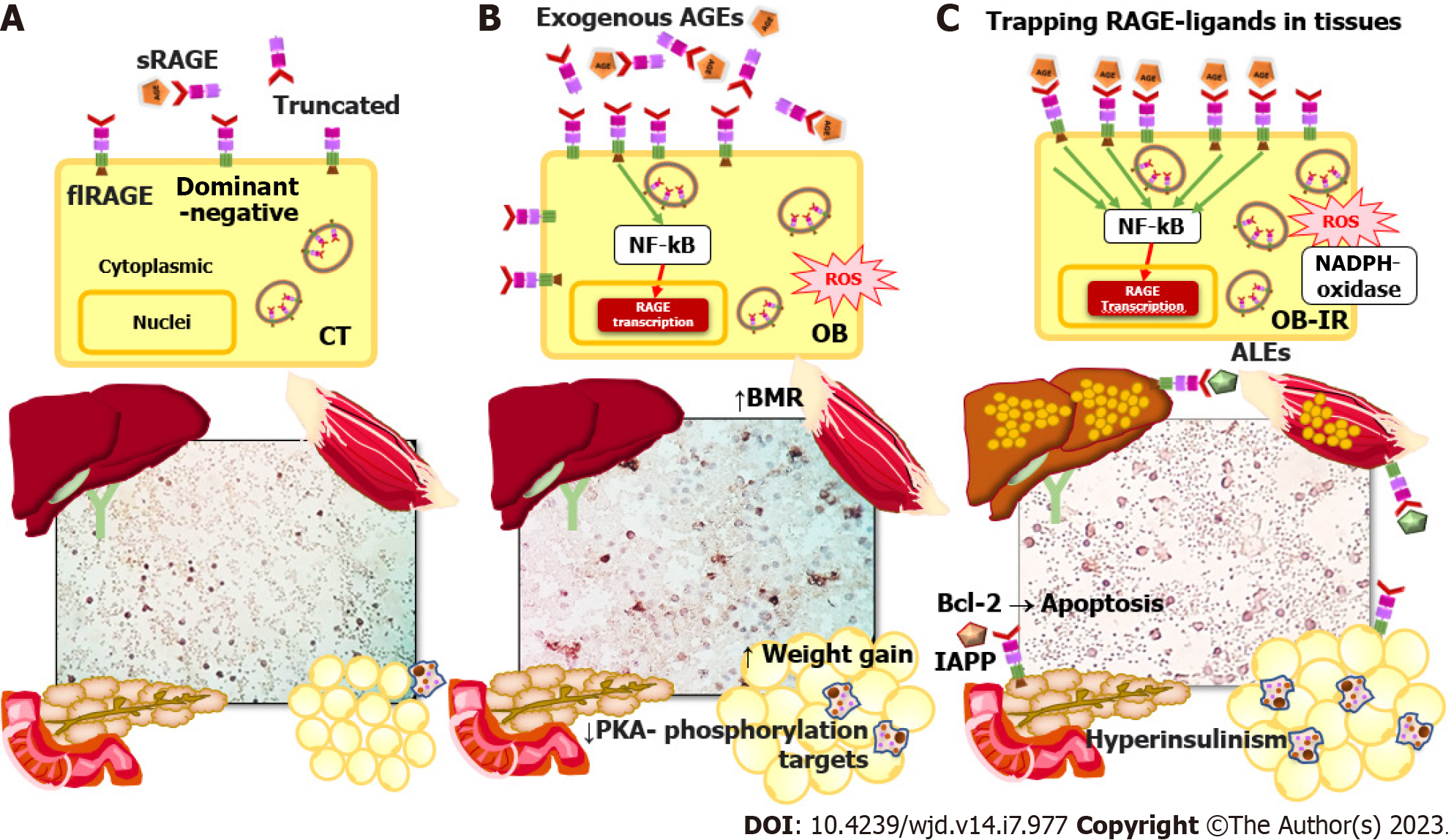Copyright
©The Author(s) 2023.
World J Diabetes. Jul 15, 2023; 14(7): 977-994
Published online Jul 15, 2023. doi: 10.4239/wjd.v14.i7.977
Published online Jul 15, 2023. doi: 10.4239/wjd.v14.i7.977
Figure 1 Receptor for advanced glycation products signaling and molecular mechanisms involved in progression from obesity to type 2 diabetes mellitus.
Receptor for advanced glycation products (RAGE)-ligand signaling in healthy control subjects, obese individuals (OB), and OB with insulin resistance is illustrated. A: Full-length, total soluble, dominant-negative (intracytoplasmic, lacking domain), and truncated (lacking a V-terminal) RAGE isoforms; B: Basal metabolic rate increase in muscle, decreased phosphorylation targets of protein kinase A, and weight gain (adipose tissue) are findings in obesity related to increased RAGE isoforms and ligands; C: The mechanism trapping RAGE-ligand in tissues involves translocation of cytoplasmic RAGE to the membrane, inflammation (nuclear factor-kappa B), and oxidative stress (NADPH-oxidase) in peripheral mononuclear blood cells, liver, muscle, pancreas, and adipose tissue. The B cell lymphoma-2 proto-oncogene mediates RAGE apoptosis signaling in pancreatic beta cells and leads to type 2 diabetes mellitus. Advanced glycosylation end products, advanced lipoperoxidation end products, and islet amyloid polypeptide (also known as amyloid) are RAGE ligands. RAGE: Receptor for advanced glycation products; CT: Control subjects; OB: Obese individuals; OB-IR: Obese individuals with insulin resistance; flRAGE: Full-length receptor for advanced glycation products; sRAGE: Soluble receptor for advanced glycation products; BMR: Basal metabolic rate; PKA: Protein kinase A; NF-kB: Nuclear factor-kappa B; PBMCs: Peripheral mononuclear blood cells; Bcl-2: B cell lymphoma-2; AGEs: Advanced glycosylation end products; ALEs: Advanced lipoperoxidation end products; IAPP: Islet amyloid polypeptide.
- Citation: Garza-Campos A, Prieto-Correa JR, Domínguez-Rosales JA, Hernández-Nazará ZH. Implications of receptor for advanced glycation end products for progression from obesity to diabetes and from diabetes to cancer. World J Diabetes 2023; 14(7): 977-994
- URL: https://www.wjgnet.com/1948-9358/full/v14/i7/977.htm
- DOI: https://dx.doi.org/10.4239/wjd.v14.i7.977









